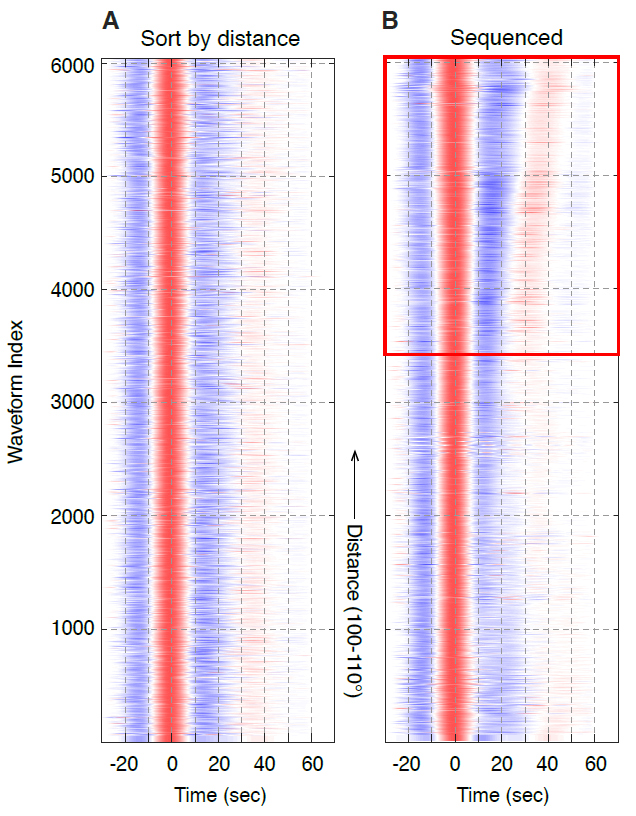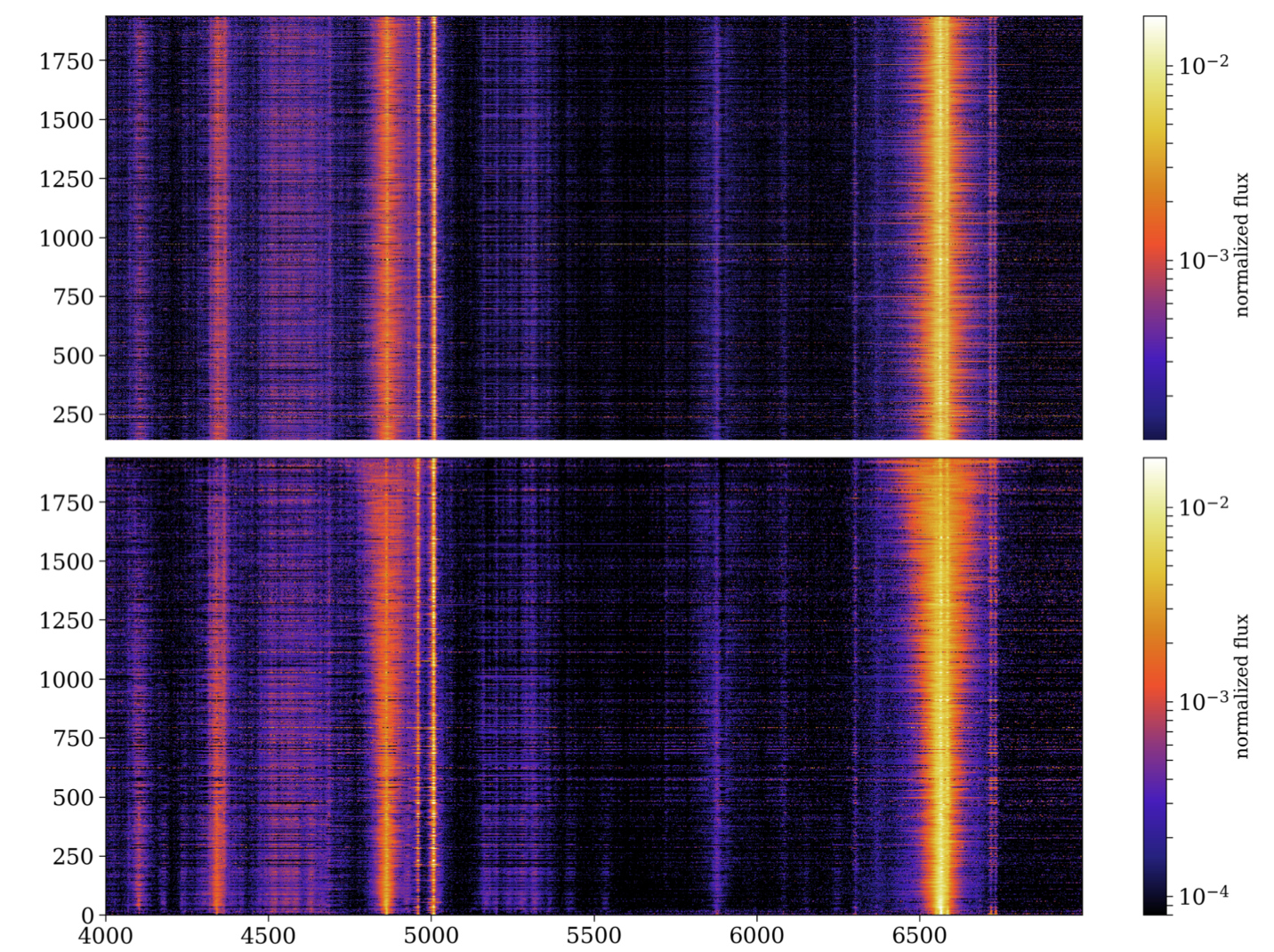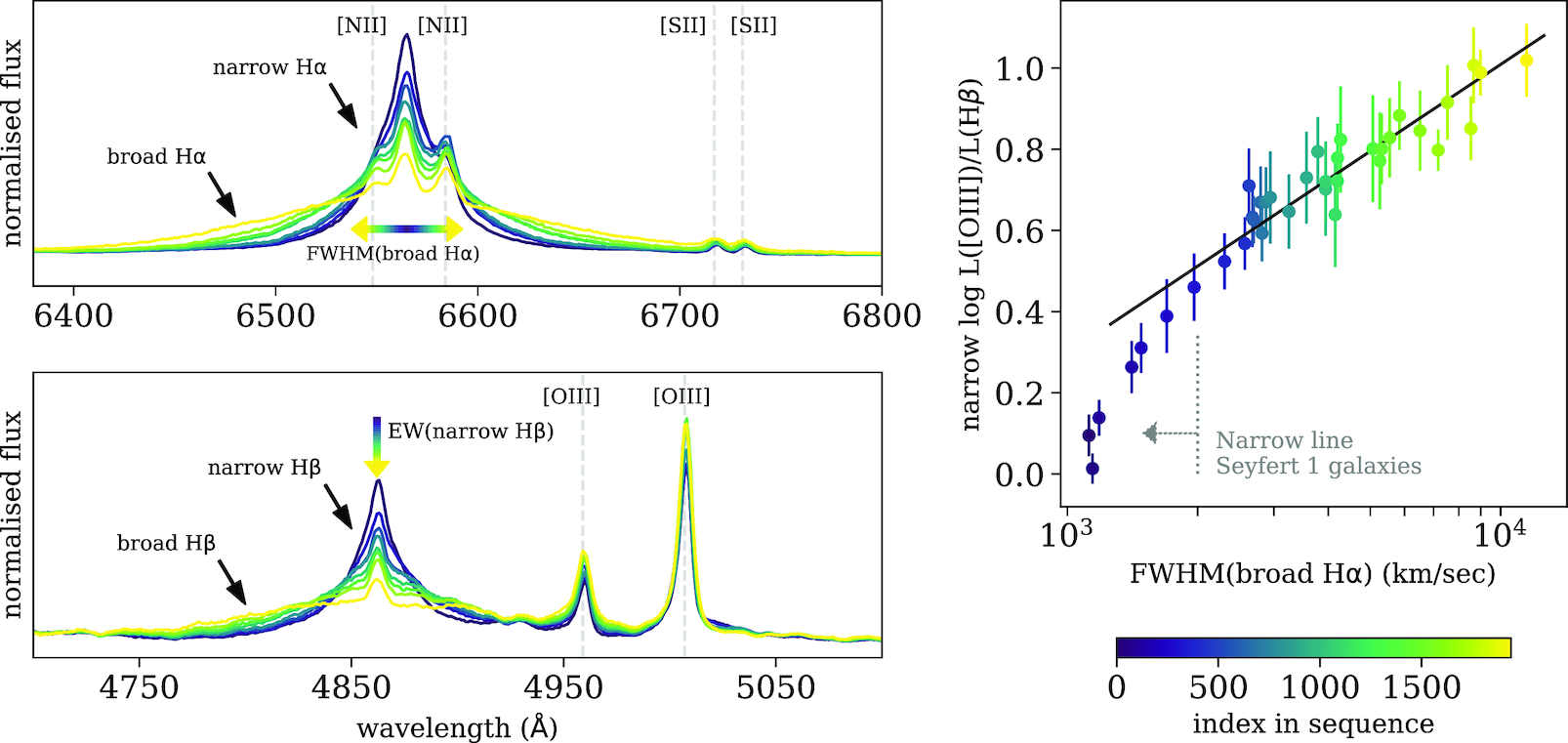Scientific discoveries enabled by the Sequencer
Sequencing Seismograms: A Panoptic View of Scattering in the Core-Mantle Boundary Region
By Doyeon Kim, Vedran Lekić, Brice Ménard, Dalya Baron, and Manuchehr Taghizadeh-Popp
Science, June 2020 | Download paper | Science website
Scattering of seismic waves can reveal subsurface structures, but usually in a piecemeal way focused on specific target areas. We used a manifold learning algorithm, the Sequencer, to simultaneously analyze thousands of seismograms of waves diffracting along the core-mantle boundary and obtain a panoptic view of scattering across the Pacific region. In nearly half of the diffracting waveforms, we detected seismic waves scattered by 3D structures near the coremantle boundary. The prevalence of these scattered arrivals shows that the region hosts pervasive lateral heterogeneity. Our analysis revealed loud signals due to a plume root beneath Hawaii and a previously unrecognized ultralow-velocity zone beneath the Marquesas islands. These observations illustrate how approaches flexible enough to detect robust patterns with little-to-no user supervision can reveal unique insights into the deep Earth.Black hole mass estimation for Active Galactic Nuclei from a new angle
By Dalya Baron and Brice Ménard
MNRAS 2019 | Download paper | arXiv websiteThe scaling relations between supermassive black holes and their host galaxy properties are of fundamental importance in the context black hole-host galaxy co-evolution throughout cosmic time. In this work, we use a novel algorithm that identifies smooth trends in complex datasets and apply it to a sample of 2 000 type I active galactic nuclei (AGN) spectra. We detect a sequence in emission line shapes and strengths which reveals a correlation between the narrow L([OIII])/L(Hβ) line ratio and the width of the broad Hα. This scaling relation ties the kinematics of the gas clouds in the broad line region to the ionisation state of the narrow line region, connecting the properties of gas clouds kiloparsecs away from the black hole to material gravitationally bound to it on sub-parsec scales. This relation can be used to estimate black hole masses from narrow emission lines only. It therefore enables black hole mass estimation for obscured type II AGN and allows us to explore the connection between black holes and host galaxy properties for thousands of objects, well beyond the local Universe. Using this technique, we present the MBH − σ and MBH − M∗ scaling relations for a sample of about 10 000 type II AGN from SDSS. These relations are remarkably consistent with those observed for type I AGN, suggesting that this new method may perform as reliably as the classical estimate used in non-obscured type I AGN. These findings open a new window for studies of black hole-host galaxy co-evolution throughout cosmic time.



